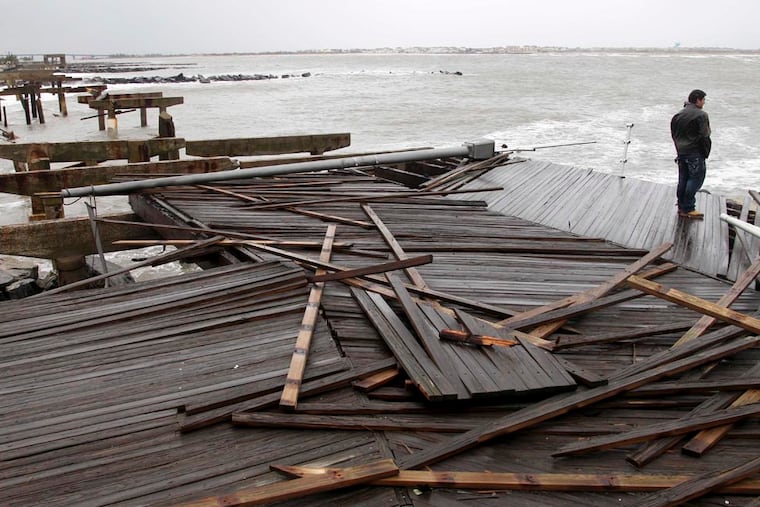More tropical storms will turn into major hurricanes in the Northeast. Search for your property’s risk.
New neighborhoods getting hit by never-before-experienced wind speeds could be in Philly or South Jersey but the Shore, as always, will still feel the brunt.

Tropical cyclones will batter the Northeast harder in coming years as more turn into major hurricanes, according to a new risk assessment by First Street Foundation, a research nonprofit working to define climate risk.
They’ll also push farther inland.
So while properties along the Shore would bear the brunt of new destruction, neighborhoods in the Philly area that have never experienced hurricane-force winds before could be in the crosshairs within 30 years, suggest models developed by First Street Foundation.
Matthew Eby, founder of the nonprofit, said that the proportion of major hurricanes — Category 3, 4, or 5 — has increased from 10% of all tropical cyclones in 1980 to more than 40% today. The intensity is due to rising air and ocean temperatures that provide the energy that fuels storms.
Scientists give hurricanes a rating of 1 to 5 based on the Saffir-Simpson Hurricane Wind Scale. A 1 carries winds of 74 to 95 mph. A 5 packs winds of 157 mph or higher.
“There are ebbs and flows, but the trend line is that we’re getting almost 50% of when a tropical storm or hurricane forms, it strengthens into a major hurricane,” Eby said.
Because of climate change, more than 13.4 million properties will be exposed to tropical cyclones in 30 years that are not currently vulnerable, the research says. Multiple federal agencies and various real estate platforms, such as Realtor.com, tap First Street Foundation’s data and models.
More local risk
The nonprofit has developed an online risk assessment tool that allows users to plug in addresses and see how a specific property fares for risk of flood, heat, wildfire, and wind.
A property picked randomly in Ocean City ranked as having a severe risk of wind damage in the future. Within the next 30 years, the property has a 92% chance of experiencing a tropical storm.
If a very rare storm with high winds occurred today, the property could experience wind gusts of 114 mph. In 30 years, the gusts would increase to 129 mph.
Properties in Atlantic City and Avalon show similar severe risks. But risks grow inland, too.
A property picked at random in Fishtown, for example, currently faces a 1% chance of being affected by tropical storm winds today. That would grow to 34% in 30 years.
“So as hurricanes strengthen over time, properties that would not be damaged today in a tropical cyclone will be damaged 30 years from now,” Eby said. “Places like Maryland, New Jersey, New York, Rhode Island are all starting to pop up on the graphs because these hurricanes are making their way north.”
The Northeast also tends to have higher property values and repair costs, making wind damage more expensive than in other regions.
The wind risk assessment, conducted with Arup, a global engineering firm, lists the top cities likely to face a major hurricane this year, and all are in Florida. But Ocean City ranks 14th in the top 20 cities by percentage increase in average annual property losses over 30 years.
Eby said the major hurricanes are “going to start hitting places that they previously did not.”
As a result, officials might have to rethink public policy and building codes, he said.